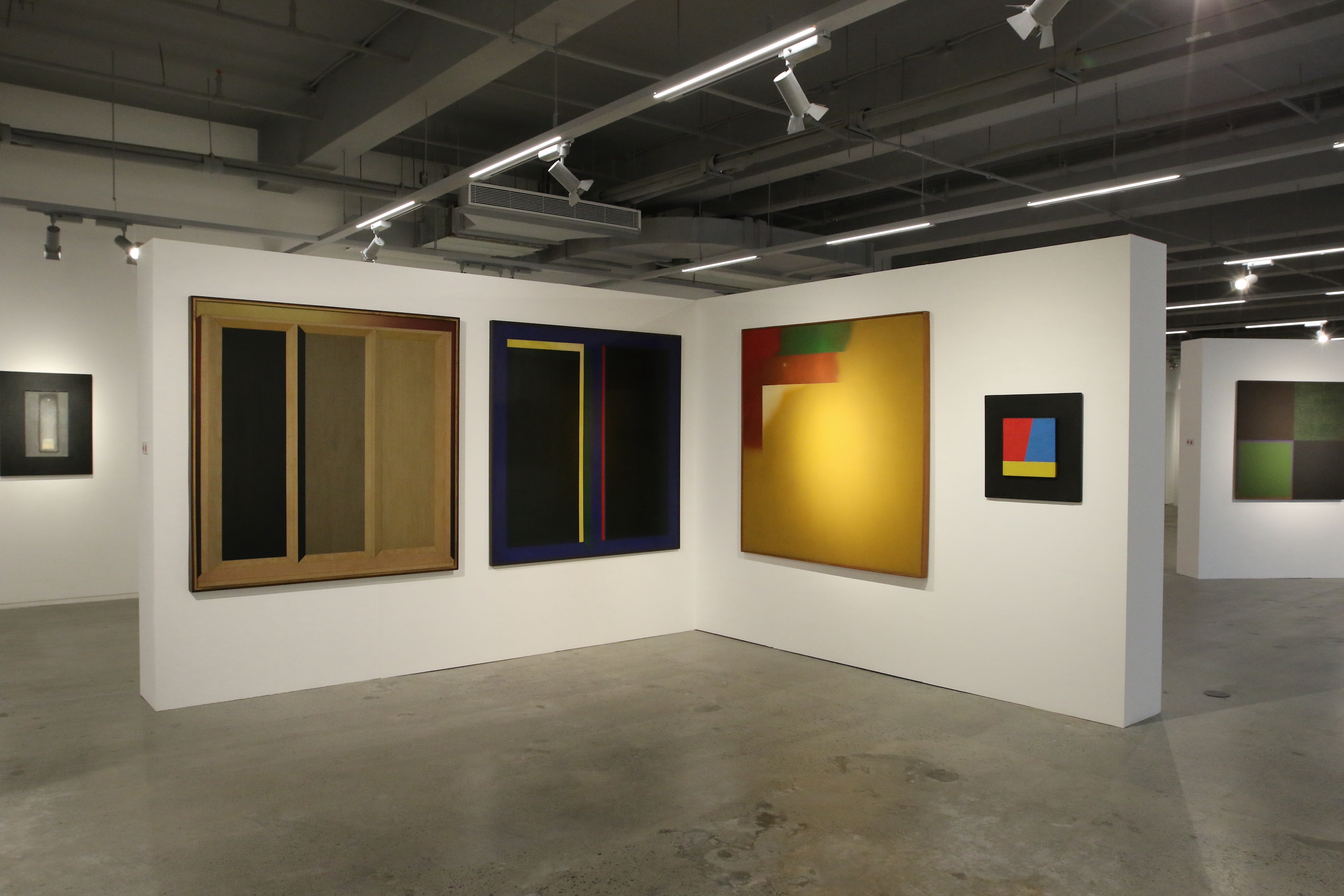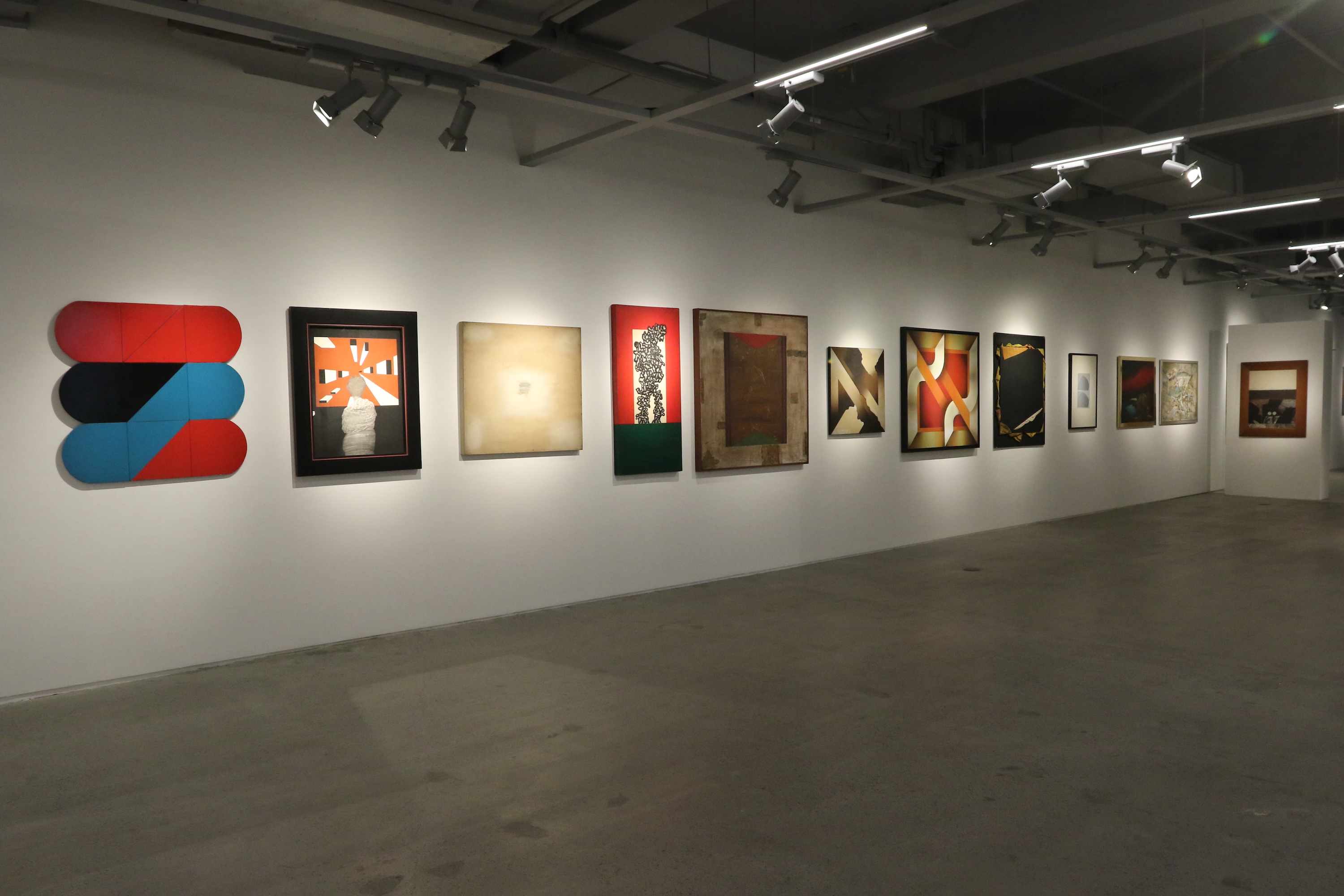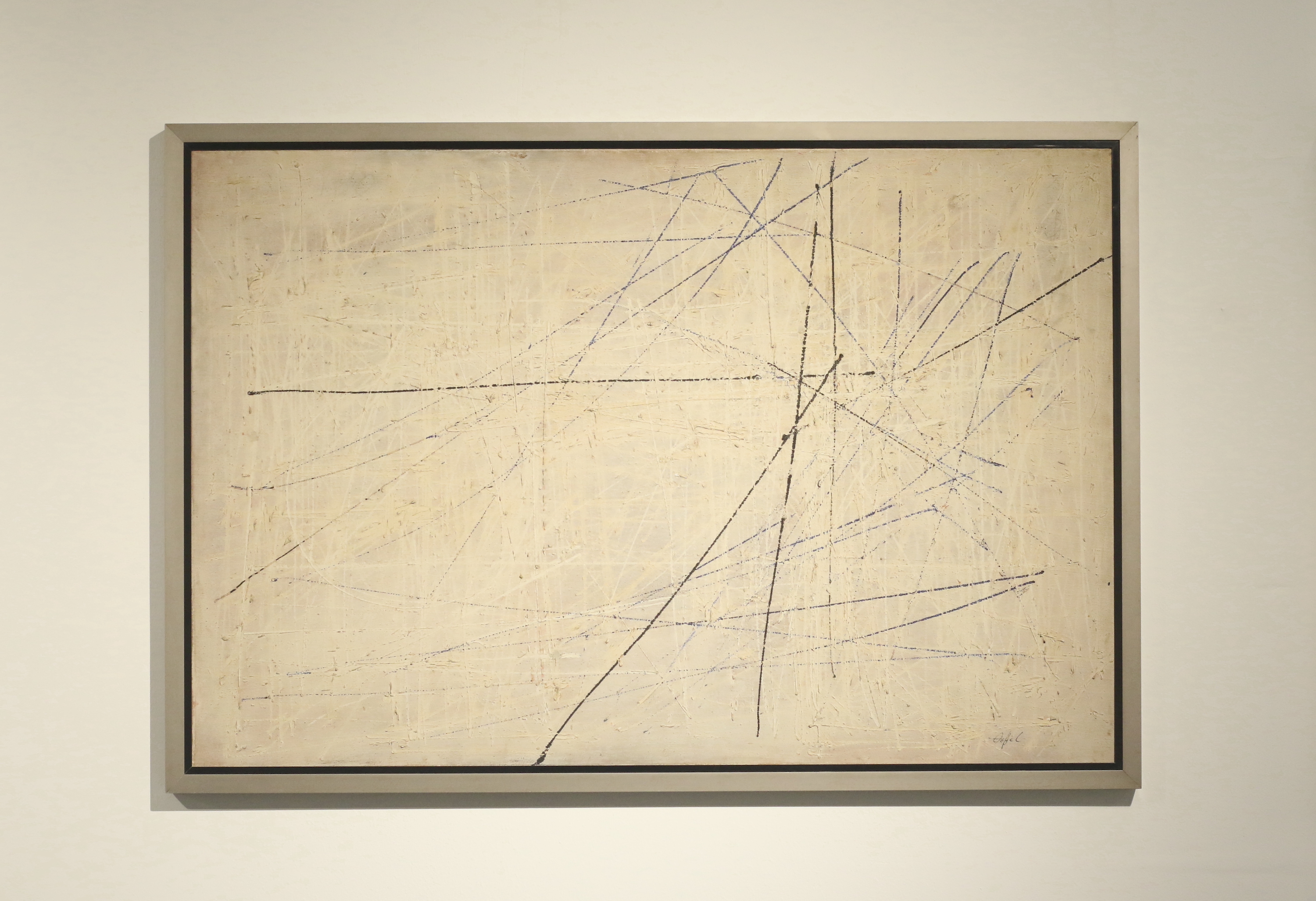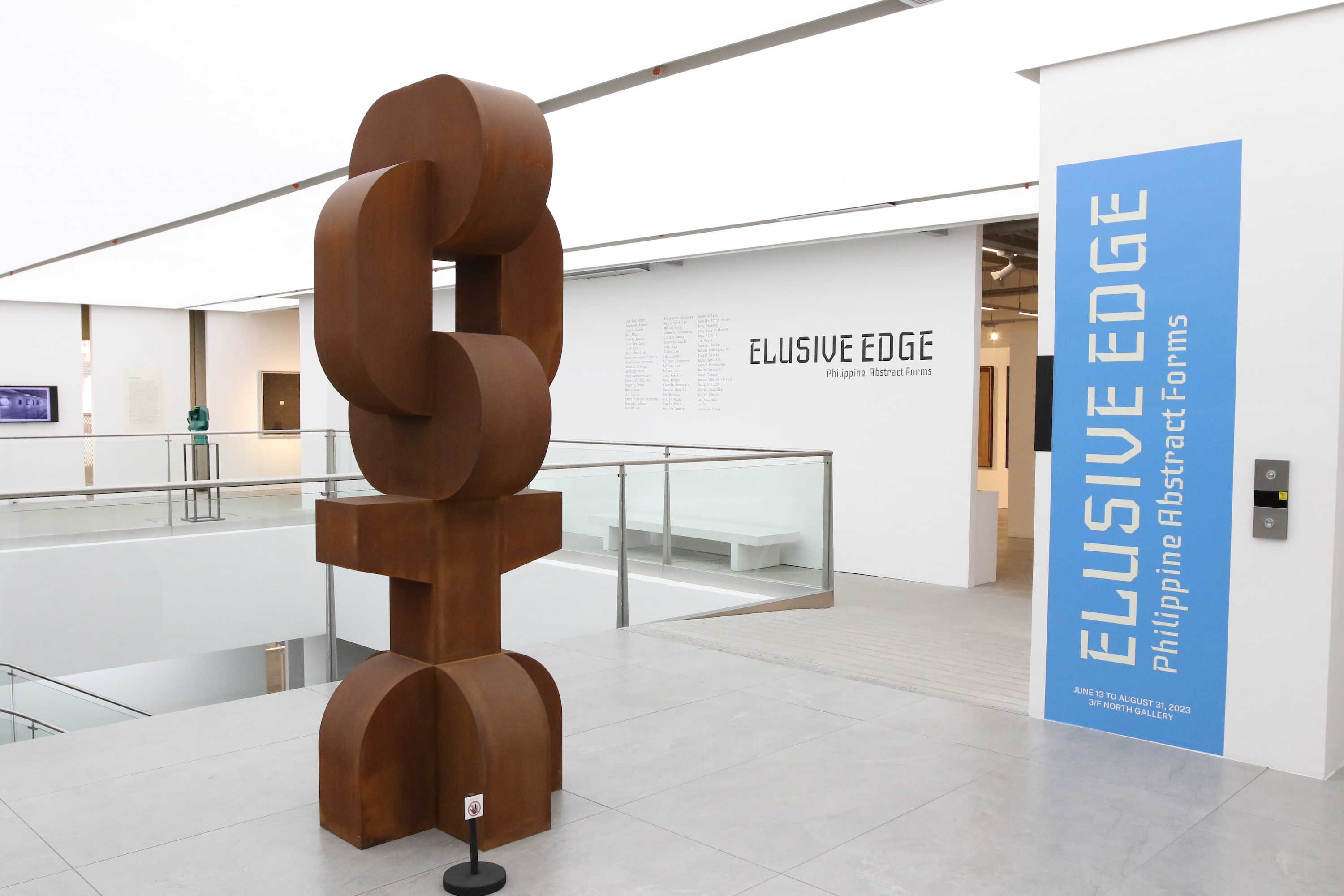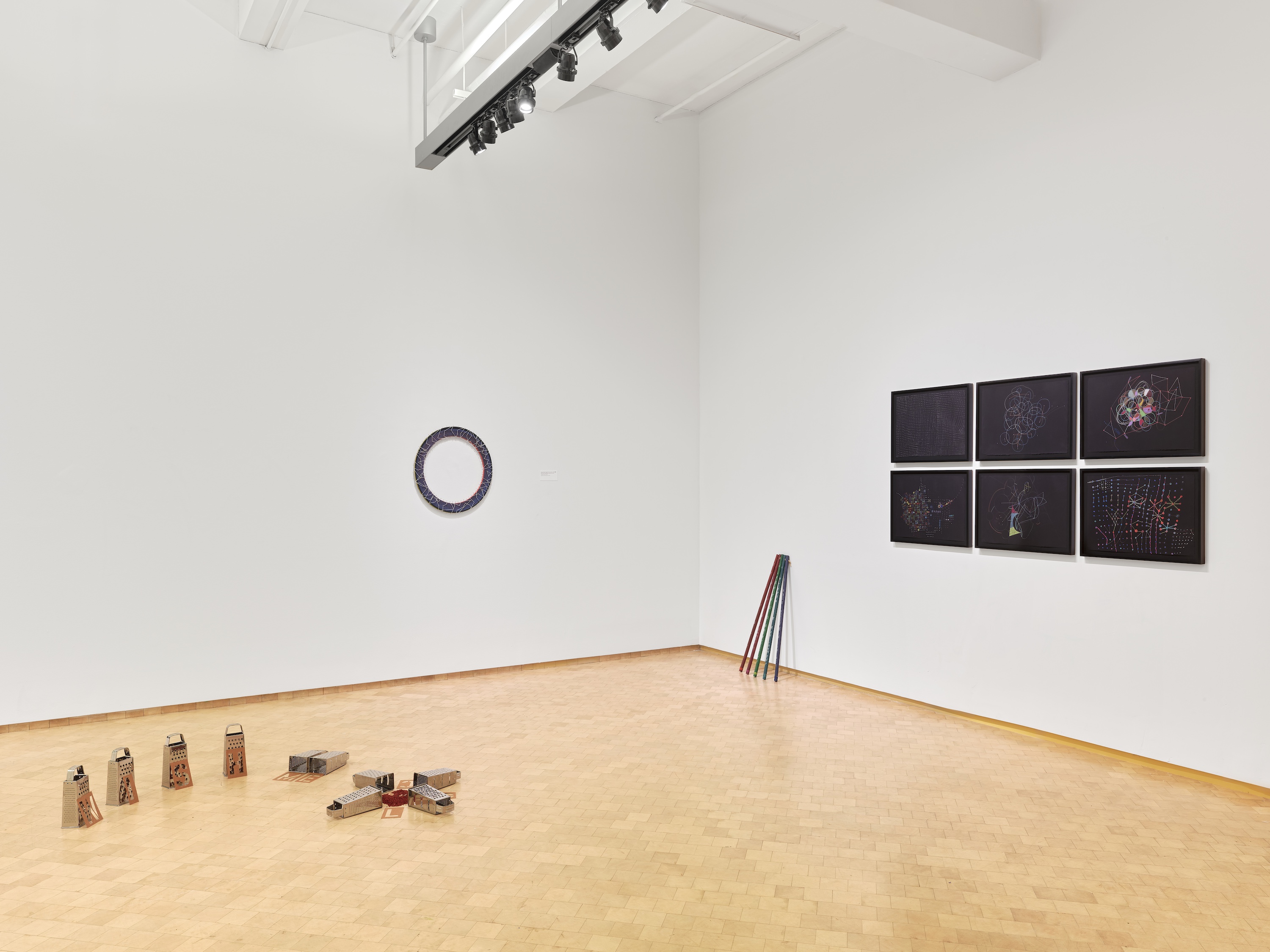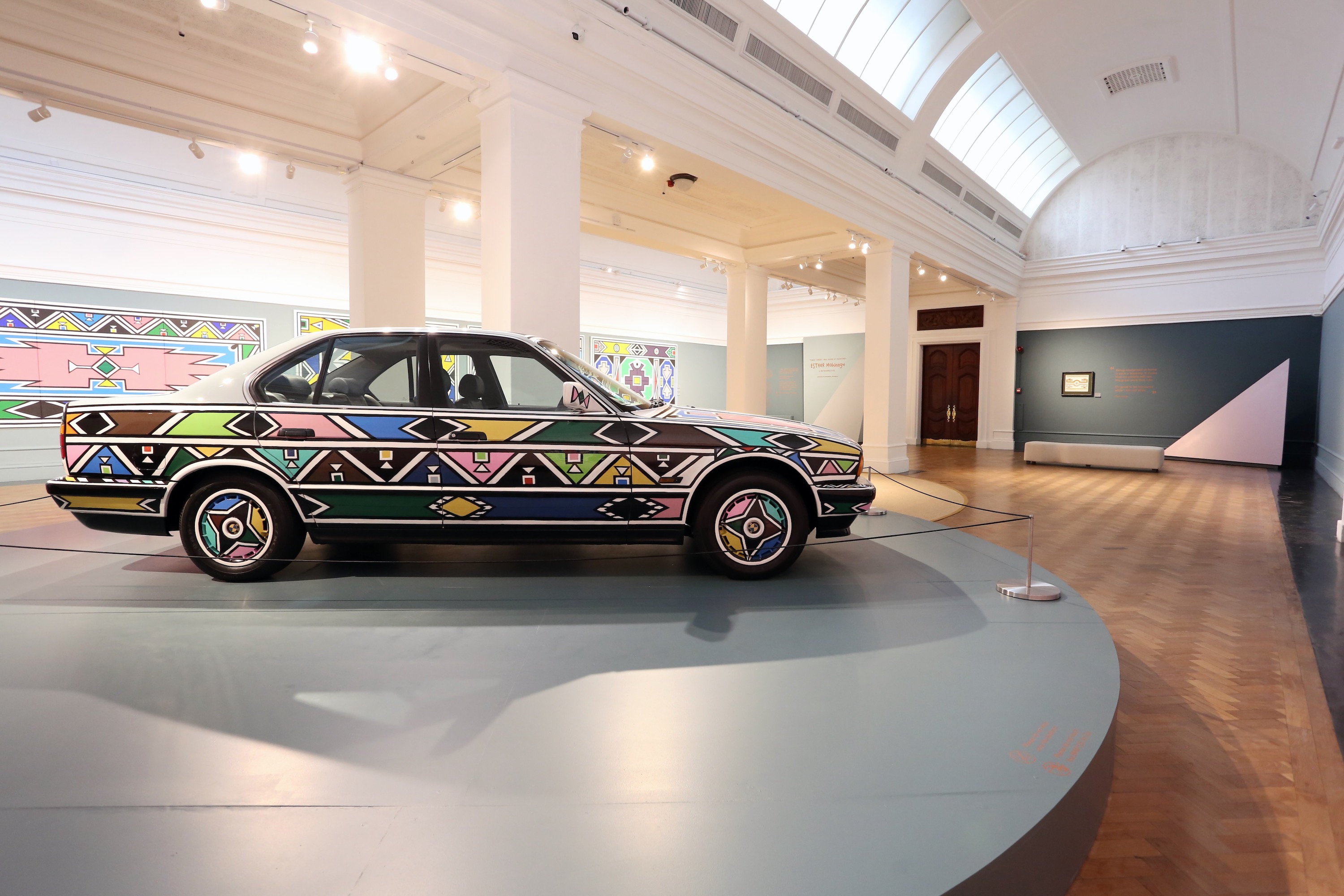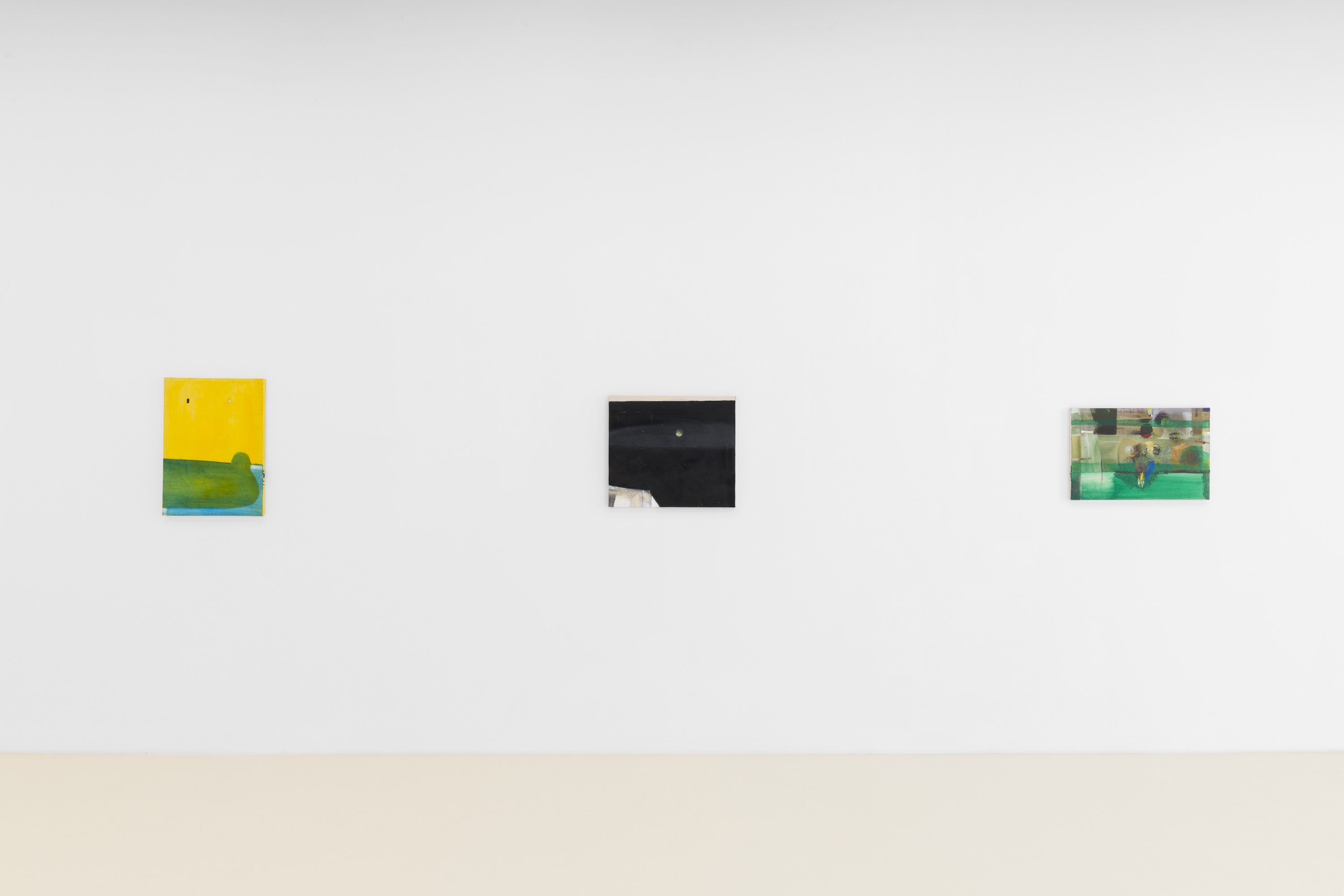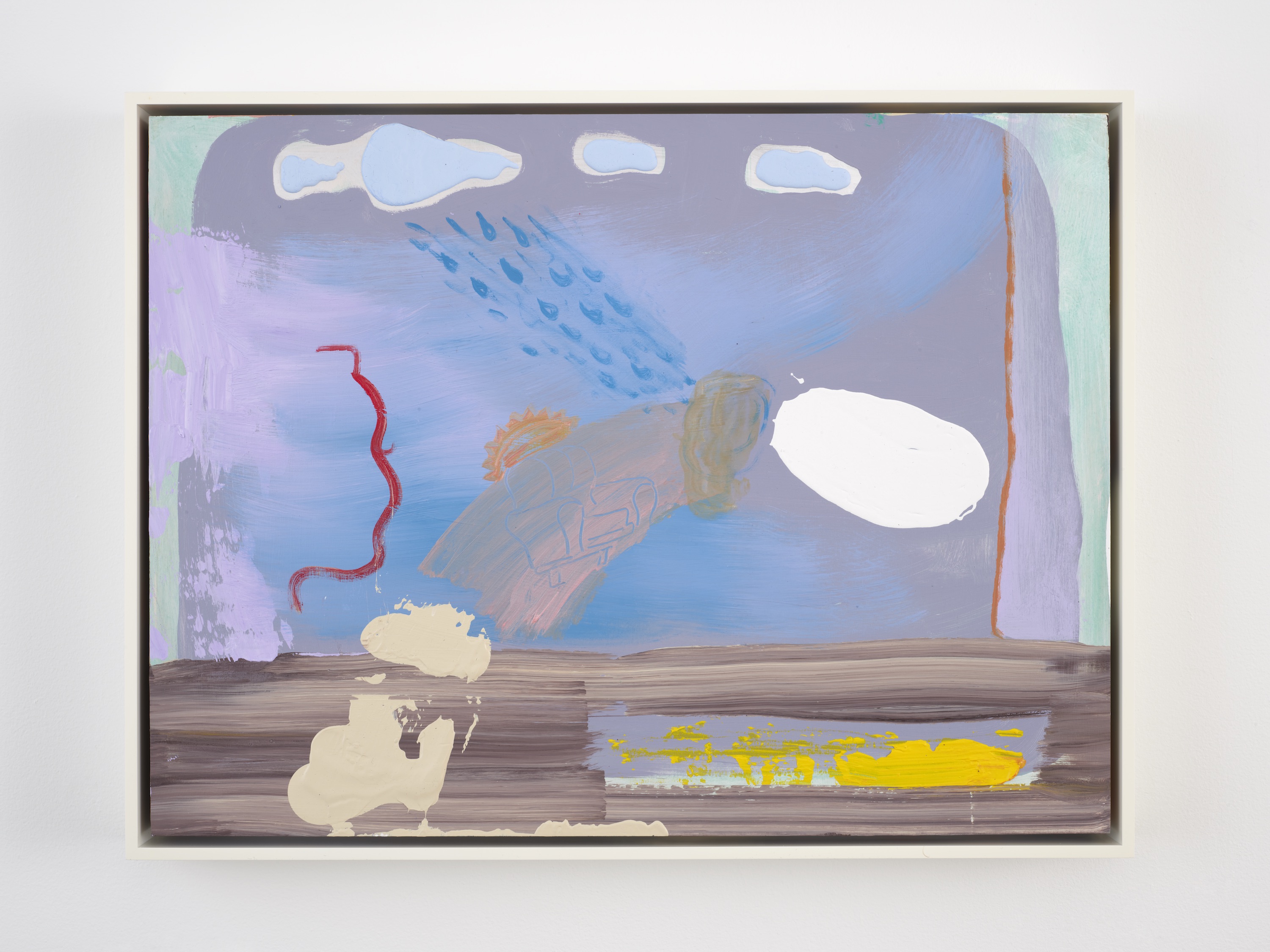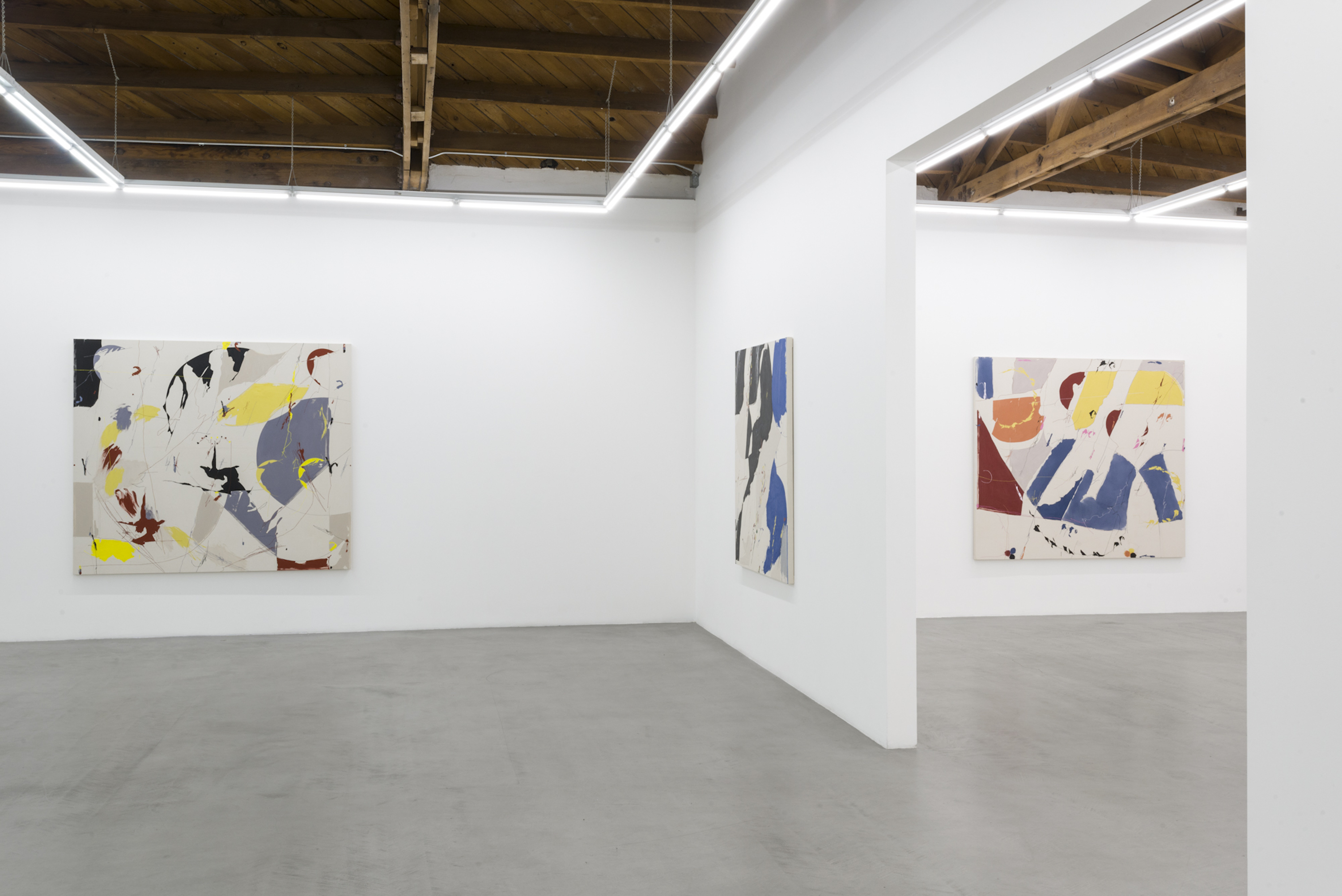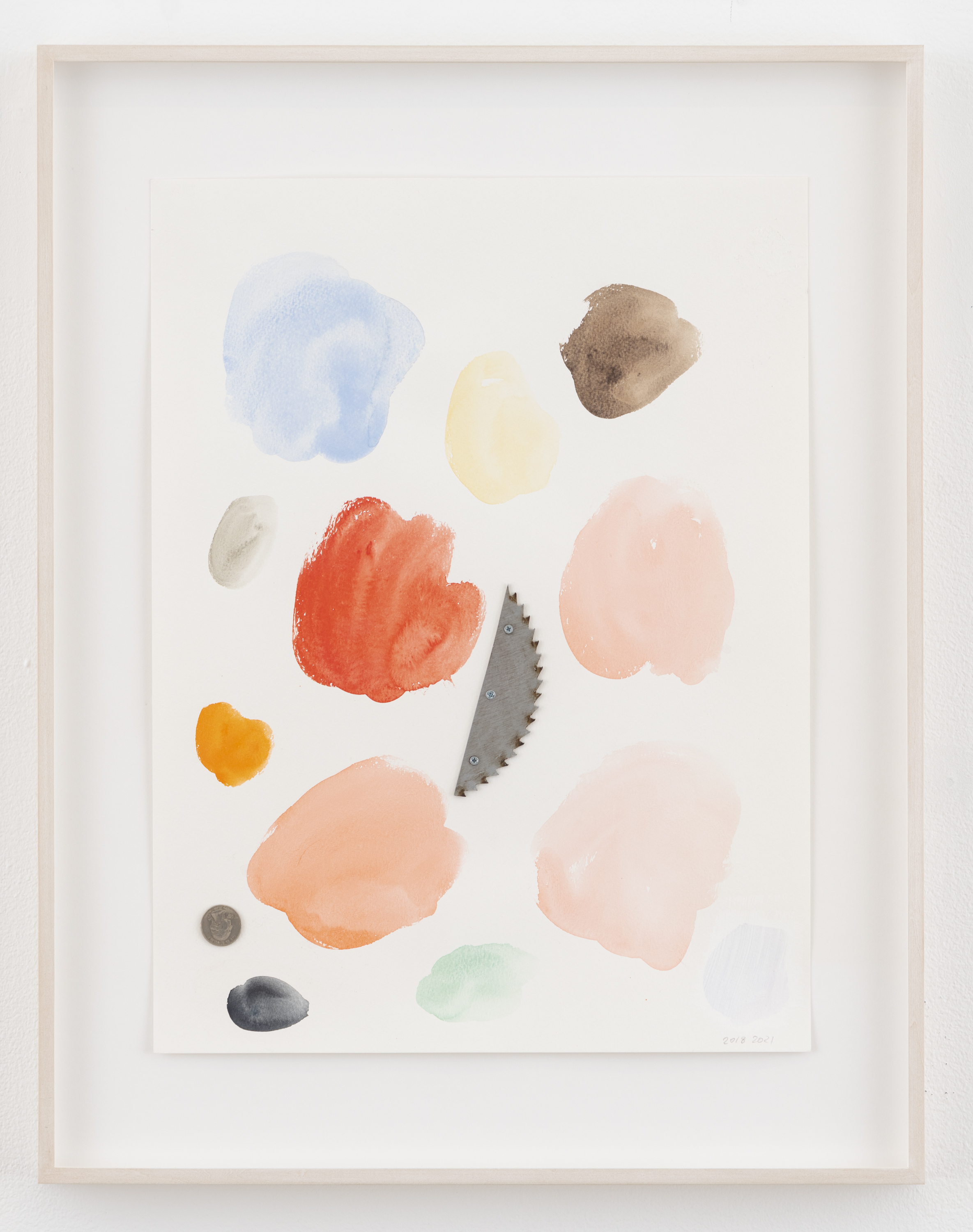June 13–August 31, 2023
While framed as a non-survey exhibition, “Elusive Edge: Philippine Abstract Forms” presents a compelling cross-section of geometric abstraction in the Philippines, from its postwar formation to postmedia experiments that extend its legacies. Featuring the Cubist impulses of Vicente Manansala’s 1960 still life featuring the titular mango and papaya, the linear flourishes of Fernando Zobel’s Castilla XXII (1957), Leo Valledor’s color field appropriation of the Philippine flag (1981), and more contemporary brick paintings by Maria Taniguchi (2018), the exhibition makes a worthwhile attempt to revisit this particular visual idiom and to renew the stakes for thinking about it both in and beyond its art-historical, stylistic, and disciplinary contexts.
The exhibition, curated by Patrick D. Flores, accomplishes this by a broadening of categorical parameters: “abstract forms,” rather than “abstraction”—as evidenced in this show, the former is less burdened by modernist influence than in fleshing out these forms’ own tendencies. True to its title, “Elusive Edge” emphasizes how gestures of abstraction overlap with forms and disciplines beyond visual art, such as architecture and design.
The dense hang of “Elusive Edge,” which features more than sixty artists and eighty works, foregrounds differences in the works’ stylistic intentions while allowing points of commonality to emerge. Grids and frames within frames—which characterize, for example, a group of paintings from the 1970s by Benedicto Cabrera, Gus Albor, and Santiago Bose—are common tendencies throughout. The density and immediate visual kinship of this grouping is brought into relief by Lani Maestro’s 1981 series of spare watercolor-and-pencil works on paper. Displayed on a wall in the middle of the central gallery in stainless steel and white frames, Maestro’s sleet-gray surfaces, with sheer smudges of graphite, resemble curtains of rain through gusts of wind, and starkly contrast with the intense colors and severe edges of paintings elsewhere in the space. Totemic metal and wood sculptures from different periods in Arturo Luz’s practice (the 1970s and 2010s, respectively) punctuate other areas to similar effect.
The scope of the exhibition is broken down into sections: the relationship between the real and the ideal; the development of genres of abstraction (such as color field and hard-edge); the shifting relationship between—or the shifty binary of—figuration and abstraction; and recent practices informed by abstraction. Perhaps the most successful aspect of the show is how, through refreshing curatorial strategies, it conceptualizes the titular “edges.” “Elusive Edge” highlights both how disciplines meet one another, demonstrating how international tendencies such as Cubism have been transposed into vernacular articulations such as “Neo-realism,” and the museum itself as a space that makes possible the juxtaposition of kindred gestures from different artistic traditions. A life-size reproduction of a photograph documenting printmaker Ileana Lee’s Wedge (1977), in which the artist uses tape to outline the threshold of a museum space’s doorway, presents an “edge” not only of abstraction but also of the perimeter, acting as a portal to another time and space. A sculpturally designed book on the Philippine Art Gallery (the foremost art space that catered to the Philippine Neo-realists in the 1950s), the triangular pages of which are laminated in sheets of plastic, is juxtaposed with photographs of buildings designed by Alfredo Luz. Placing these works beside each other foregrounds how abstract idioms were translated into the fields of design and architecture.
In a change of pace from the tighter hang elsewhere in the show, the section dedicated to contemporary inflections of abstract tendencies presents a looser assembly of works. Among the highlights are works from the 2010s and ’20s such as Maria Cruz’s oil paintings of ornamental patterns found in ubiquitous materials such as plastic table covers; a series of collages by artist Gary-Ross Pastrana comprising fragments of colors and shapes; Taniguchi’s eight-meter-long acrylic painting foregrounding her laborious attempt to paint a wall made of bricks, block by painstaking block; Paulo Vinluan’s hand-drawn animation of geometric motifs; and a lightbox work by Derek Tumala, presenting an ethereal swirl of colors installed as a spectacle on the floor.
A few pieces on display serve to complicate the dominant narratives of abstraction in the Philippines, which center on the lives and times of its most popular exponents. Rosario Bitanga, who isn’t written about as often as she should be, is an important figure in Philippine modernism deserving of wider recognition—as evidenced by her works in this show. In Street Lights (1952), she paints geometric flourishes using Chinese ink on paper. There are nods to lesser-known art-historical lineages in the display of works by Josef Albers (represented in the museum’s collection) alongside others by Constancio Bernardo, whom he taught. By engaging in the museum’s collection in this way, “Elusive Edge” alludes to the very makings of the Metropolitan Museum of Manila—created in 1976 as the international counterpart to the other institutions that the Marcos dictatorship formalized and that became central to its project of national modernity, including the Museum of Philippine Art (1979–89) and the Design Center of the Philippines (1973), all under the directorship of Luz and the patronage of First Lady Imelda Marcos.
“Elusive Edge” succeeds both in its modern, postcolonial approach to art history and in its presentation of a stimulating and surprising contemporary exhibition. In encouraging its visitors to navigate genres and styles through intuitive visual encounters—through the stimulating, mutating uses to which colors, lines, and edges have been put, rather than a strictly chronological approach governed by art history—the exhibition allows for fresh and inventive readings of abstract forms. Instead of delineating limits and borders, this show invites viewers to recognize edges as contiguities—where the precision of the hard edge inspires the streaks of graphite, gossamer sheets of rain.
